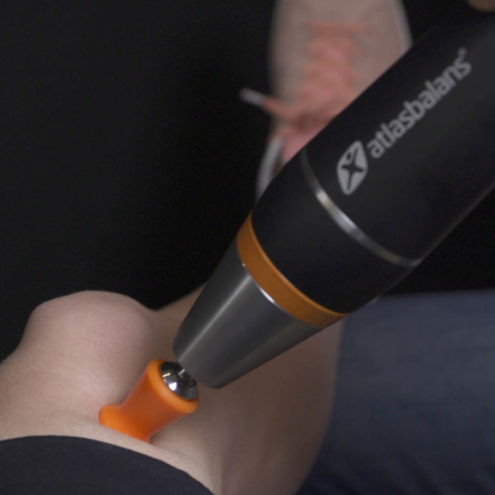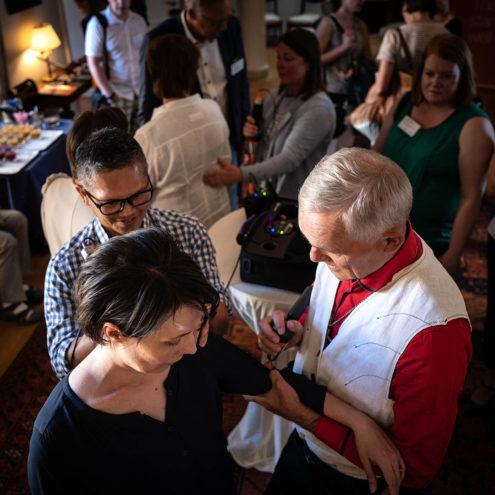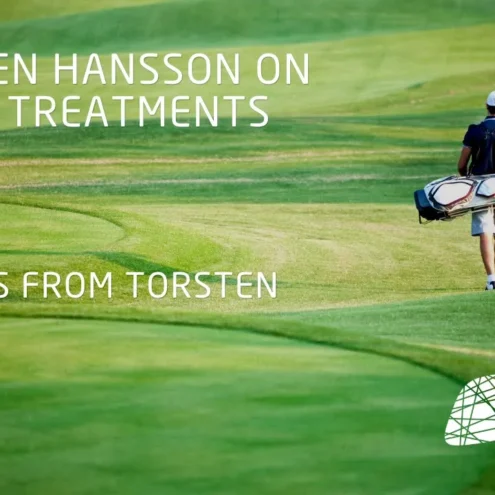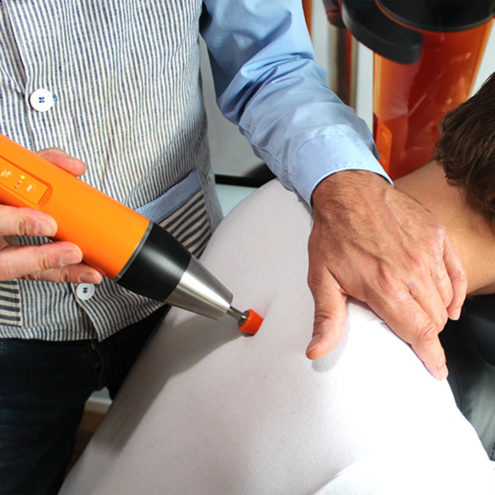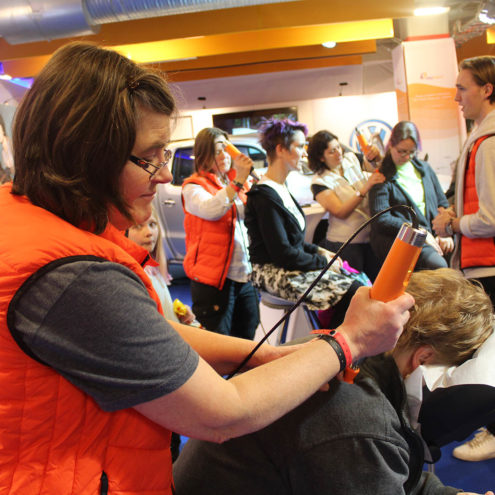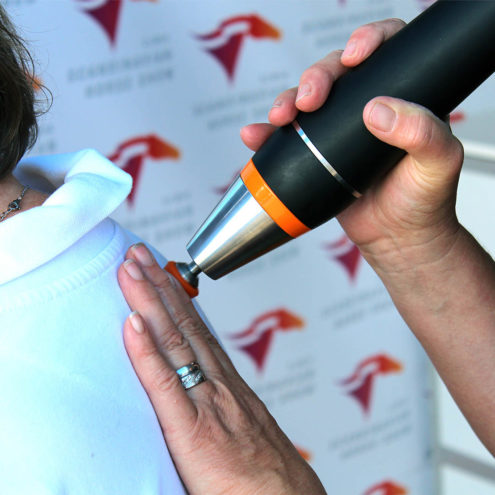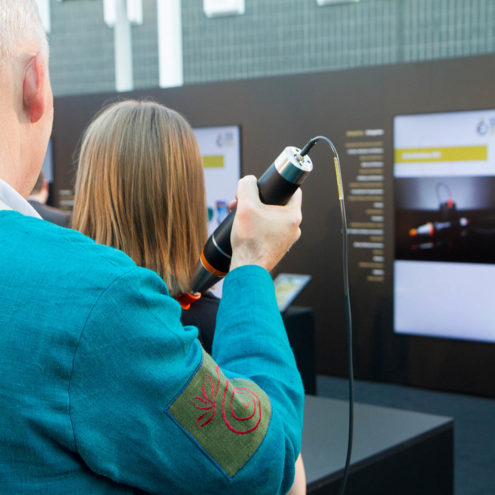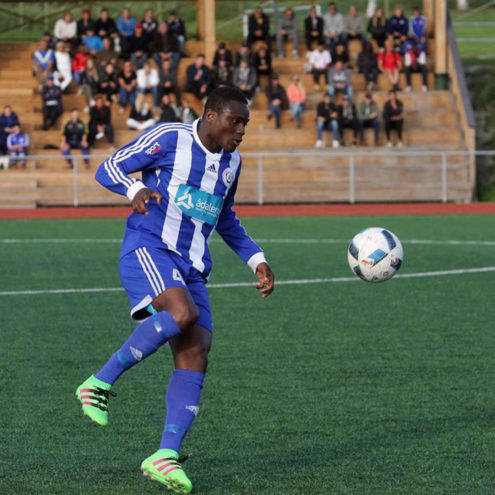Common ice hockey injuries – Prevention and Treatment

Ice hockey is an intense and physical sport that places high demands on body strength, speed and endurance. With the rapid changes in direction, body contact and hard ice surface, the risk of injury is relatively high. For players at all levels, it is therefore important to know the most common ice hockey injuries, how they occur and how to prevent them.
This guide covers the most common injuries in ice hockey, their causes and effective prevention and treatment strategies. It also explains how Fascia Clinics can help you recover faster and reduce the risk of future injuries through fascia treatment and individualized rehabilitation.
Common types of injuries in ice hockey
Ice hockey players are exposed to high stresses on their bodies and can suffer from both acute and overuse injuries. Here are some of the most common injuries:
Knee injuries (ACL and meniscus injuries)
Knee injuries are one of the most common and serious injuries in ice hockey.
cruciate ligament (ACL) injuries They often occur during sudden changes of direction or collisions. They affect knee stability and may require long rehabilitation.
Meniscus injuries: Often affects players when they twist their knee and can cause swelling, pain and limited mobility.
Shoulder injuries (AC joints and shoulder dislocations)
AC joint damage: Occurs during a hard tackle or fall where the shoulder takes the impact. It can lead to pain, swelling and limited mobility in the shoulder.
Axelluxation: When the shoulder is dislocated as a result of a collision or fall. Often requires professional treatment and rehabilitation.
Head injuries (concussion and facial injuries)
Concussion: One of the most serious injuries in ice hockey. Can occur from blows to the head, such as a tackle or fall. Common symptoms include headache, dizziness, nausea and difficulty concentrating.
Facial injuries: Cuts, bruises, and broken noses are common as a result of pucks, clubs, and tackles.
Thigh cakes and muscle contusions
A direct hit by a puck or a tackle can cause bleeding in the muscle and lead to pain and stiffness.
Muscle contusions can limit mobility and often require rest, cooling and compression.
Wrist injuries and finger fractures
Ice hockey players often use their hands and wrists to control the puck, making them vulnerable to injury.
Finger fractures and sprains can occur from hard tackles or when a puck hits the hand.
Causes and risk factors of ice hockey injuries
Several factors increase the risk of injury in ice hockey:
High speed and sudden movements – Rapid changes of direction and sudden braking put strain on muscles and joints.
Physical contact – Tackles and body contact with other players increase the risk of trauma and overload.
Insufficient warm-up – Muscles and joints that are not warmed up become stiffer and more susceptible to injury.
Lack of protective equipment – Improperly fitted equipment can lead to injuries, especially to the head, shoulders and hands.
Prevention of ice hockey injuries
Preventive training and proper preparation can significantly reduce the risk of injury.
1. Strength and mobility training
Focus on strengthening your core, legs, shoulders and back to increase stability.
Mobility training for hips, knees and shoulders reduces the risk of overloading.
2. Warming up and stretching
Dynamic movements before matches and training prepare muscles and joints for high loads.
Static stretching after exercise helps to maintain mobility and reduce muscle stiffness.
3. proper protective equipment
Make sure your helmet, shoulder pads and shin guards fit properly and are in good condition.
Wear mouthguards and wrist guards to reduce the risk of tooth and wrist injuries.
Treatment of common ice hockey injuries
In case of injury, it is important to start the right treatment quickly to minimize rehabilitation time.
Acute treatment (RICE method)
R (Rest) – Rest the injured body part.
I (Ice) – Apply cold to reduce swelling.
C (Compression) – Use bandages to limit swelling.
E (Elevation) – Hold the injured body part high to reduce blood flow to the area.
Rehabilitation and return to play
Physiotherapy and fascia treatment can help speed up recovery.
Mobility exercises and stability training to prevent the injury from recurring.
Gradual return – Start with light exercise before going back to full contact on the ice.
How our specialist team at Fascia Clinics can help you
At Fascia Clinics, we offer specialized treatment and rehabilitation for ice hockey players. Our fascia treatments and individualized training programs can help you to:
Reduce pain and stiffness after injury by improving fascia and muscle tissue.
Speed up recovery through treatment methods that optimize blood flow and circulation.
Preventing future injuries by identifying and correcting imbalances in the body
Whether you’re an elite or recreational player, we can help you get back on the ice stronger and more resilient. Visit us at fasciaklinikerna.se to book a consultation and optimize your recovery!
 Search
Search






